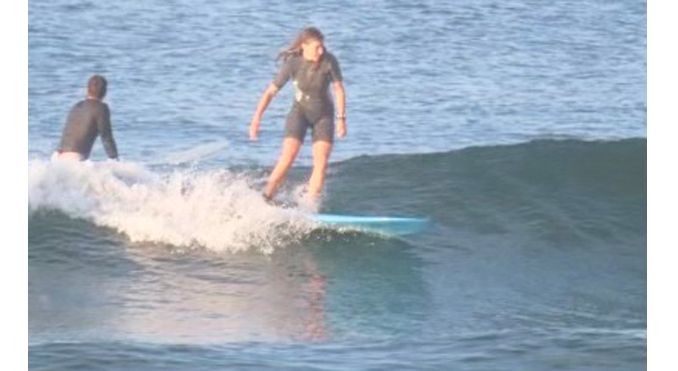
Hurricane Force
Fall is here and hurricane tracking is in full swing for east coast surfers as they follow storms moving up the coast. Within the last twenty years technology has dramatically improved to better calculate and predict the ocean movements, wind, swell periods, and wave height measurements.
Known as typhoons in other regions of the world, tropical cyclones form in the tropics and are dubbed hurricanes that produce extreme waves, high wind speeds and ultimately storm surges. While normal windy conditions are more predictable, hurricane force winds are not consistent, and they move in a circular motion with varying speeds.
Closely following NOAA (The National Oceanic and Atmospheric Administration) scientists, spaghetti models, buoy readings offshore, and understanding barometric pressure become part of the surf experience this season. Though the season technically runs from the 1st of June through the end of November, hurricane season for surfing on the east coast is usually now, and follows a summer of flat, or smaller waves. The powerful waves associated with hurricane swells differ from wind swells in that the former has larger waves in closer succession while the latter is notable for a shorter wave period and weaker waves. In contrast to peaky wind swells that are fun for beach breaks, ground swells tend favor point breaks since the beach breaks close out.
Hurricane waves occur closer to the shoreline and have a shorter period, so you must know how to surf these waves and be prepared for surprises.
Know how fast the storm is moving and where the storm is headed, so keep track since the waves you find could be after the storm or ahead of it. Coves that provide shelter from the wind and spots with man-made structures help. Most importantly, be in top surf shape. If you have dabbled all summer and have not used a warmer suit since the year prior, you are likely not ready for hurricane conditions. If you are in proper physical shape, you will know the best board for the surf. Counter intuitive as it sounds, you need a board to provide more control down the face of larger waves, which could mean more rail, volume and even length. The board you need will be with one that can make the steep drops and allow you to go faster rather than feel wobbly.
When in doubt, do not go out. And if you are out and unsure, head in. Fighting rips, shore breaks, more swimming, paddling, and pushing through big waves with shorter periods are exhausting for any surfer. Expect a shorter session. The conditions can change as quickly as the wind direction. Use your skills, power of observation, knowledge, scientists at NOAA, and intuition. Do not go out alone or become overconfident about the last time you surfed Hurricane X (insert your favorite storm).
Be as prepared as possible, and always expect the unexpected. Good luck!

